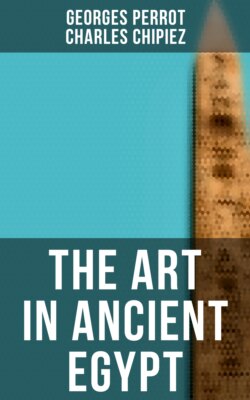Читать книгу The Art in Ancient Egypt - Perrot Georges - Страница 14
На сайте Литреса книга снята с продажи.
TO THE READER.
ОглавлениеTable of Contents
We have been in some doubt as to whether we should append a special bibliography to each section of this work, but after mature reflection we have decided against it. We shall, of course, consider the art of each of the races of antiquity in less detail than if we had undertaken a monograph upon Egyptian, upon Assyrian, or upon Phœnician art; but yet it is our ambition to neglect no source of information which is likely to be really valuable. From many of the books and papers which we shall have to consult we may reproduce nothing but their titles, but we hope that no important work will escape us altogether, and in every case we shall give references which may be easily verified. Under these circumstances a formal list of works would be a mere repetition of our notes and would only have the effect of giving a useless bulk to our volumes.
Whenever our drawings have not been taken directly from the originals we have been careful to indicate the source from which we obtained them, and we have made a point of borrowing only from authors of undoubted authority. Those illustrations which bear neither an artist's name nor the title of a book have been engraved from photographs. As for the perspectives and restorations supplied by M. Chipiez, they are in every case founded upon the study and comparison of all accessible documents; but it would take too long to indicate in each of these drawings how much has been borrowed from special publications and how much has been founded upon photographic evidence. M. Chipiez has sometimes employed the ordinary perspective, sometimes that which is called axonometric perspective. The difference will be at once perceived.
Egyptologists may, perhaps, find mistakes in the hieroglyphs which occur in our illustrations. These hieroglyphs have been as a rule exactly transcribed, but we do not pretend to offer a collection of texts; we have only reproduced these characters on account of their decorative value, and because without them we could not have the general appearance of this or that monument. It will thus be seen that our object is not affected by a mistake or two in such matters.
We may here express our gratitude to all those who have interested themselves in our enterprise and who have helped us to make our work complete. Our dear and lamented Mariette had promised us his most earnest help. During the winter that we passed in Egypt, while he still enjoyed some remains of strength and voice, we obtained from his conversation and his letters some precious pieces of information. We have cited the works of M. Maspero on almost every page, and yet we have learnt more from his conversation than from his writings. Before his departure for Egypt—whither he went to succeed Mariette—M. Maspero was our perpetual counsellor and referee; whenever we were embarrassed we appealed to his well ordered, accurate, and unbiased knowledge. We are also deeply indebted to M. Pierret, the learned conservateur of the Louvre; not only has he done everything to facilitate the work of our draughtsmen in the great museum, he has also helped us frequently with his advice and his accumulated knowledge. M. Arthur Rhôné has lent us a plan of the temple of the Sphinx, and M. Ernest Desjardins a view of the interior of that building.
The artists who have visited Egypt have helped us as cordially as the learned men who have deciphered its inscriptions. M. Gerome opened his portfolios and allowed us to take three of those drawings, which express with such truthful precision the character of Egyptian landscape from them. M. Hector Leroux was as generous as M. Gerome, and if we have taken but one illustration from his sketch-books it is because the arrangements for this volume were complete before we had the chance of looking through them. M. Brune has allowed us to reproduce his plans of Karnak and Medinet-Abou.
We have had occasion, in the work itself, to express our acknowledgments to MM. J. Bourgoin, G. Bénédite, and Saint-Elme Gautier, who have drawn for us the principal monuments of the Boulak and Louvre Museums. For the architecture we must name M. A. Guérin, a pupil of M. Chipiez, who prepared the drawings under the direction of his master, and M. Tomaszkievicz, whose light and skilful point has so well engraved them. If the process of engraving upon zinc has given results which, as we hope, will satisfy our readers, much of the honour belongs to the untiring care of M. Comte, whose process has been employed; all these plates have been reviewed and retouched by him with minute care. The steel engravings are by MM. Ramus, Hibon, Guillaumot père and Sulpis. In order that the polychromatic decoration of the Egyptians should be rendered with truth and precision in its refined tones and complicated line, we begged M. Sulpis to make use of a process which had almost fallen into disuse from its difficulty and want of rapidity; we mean that which is called aquatint. Our plates II, XIII, and XIV will perhaps convince our readers that its results are superior to those of chromo-lithography, which is now so widely employed.
